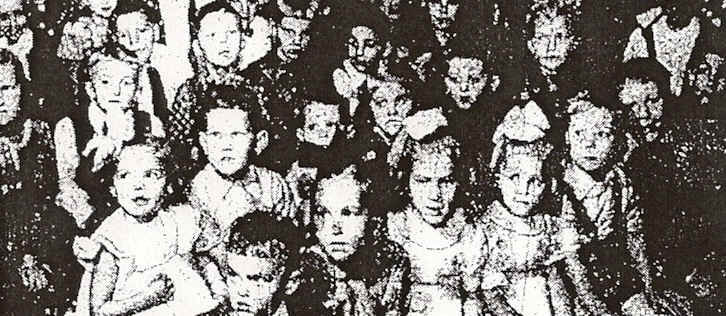
1948 Articles
Much was written about the Walnut voyage. Stories, letters, and newspaper articles appeared in multiple countries.

Much was written about the Walnut voyage. Stories, letters, and newspaper articles appeared in multiple countries.
The English translations of the following original newspaper articles are not a verbatim exact duplication of the Estonian text, but rather a very close English version of the original. Note also, that translated newspaper articles from various sources appeared both shortly before and after the Walnut voyage. Many news articles contain factual inaccuracies, but are presented herein as published and written by their authors.
Translated by Tiiu Roiser-Chorowiec from an undated newspaper clipping - approx. Nov. or Dec. of 1948? Author and Source Unknown
Photographs have been added and were not part of the original article.
The departure of the refugee boat "Walnut" from Sweden aroused much attention amongst the Swedish public unlike any other earlier refugee boat departure earlier. This attention was altogether understandable and good-hearted, if one omits hostile leftist standpoint voices. The voyage was largely touched upon by local Göteborg newspapers. When the voyage began the Göteborgs-Posten published a long article about the mood, complete with photographs from Lysekil, the port from which the Walnut sailed.
Understanding that despite the removal by authorities of 48 passengers off the boat by the authorities and that they probably re-boarded the boat beyond the reach of the authorities, the Göteborgs-Posten noted that the Walnut sailed with over 352 people. These were Estonians, Latvians, Swedes, Poles, Germans of which 70 were children.
"Their goal was America [North America], since America means for them freedom and security. They did not feel themselves secure in Europe. The majority [of the passengers] had been classified as Russian citizens and they felt this to be a danger," wrote the Göteborgs-Posten, stressing this same reason, as outlined by other Swedish newspapers, as the main reason for their departure.
"The ship was legitimately purchased from England. Almost all aboard were people, which for many years had worked in Sweden and knew the Swedish language. They had, for this purpose, saved their money and every adult onboard was also a shareholder. Every share cost 1100 kr.
Many residents of Lysekil had come to the port to say farewell to the refugees and to wish them a good journey. The police said that the "Balts" [Baltic people] had been very enjoyable guests for the city.
Someone said: "They are doing good, those that are leaving - we have seen before the Swedish foreigner's commission activities."
Someone else remarked: "Here we stand and feel sorry for them. And they stand on the deck and feel sorry, perhaps, about us, who are staying behind."
The Göteborgs-Posten wrote, as follows, about the mood in the port, which perhaps was too bitter, but still worthy of noting:
"They are standing everywhere at the railings without moving, pale and look towards the land, in order to find faces to whom to say farewell, for whom to smile. The older ones lifted the children to the edges of the railings, sitting themselves on the life rafts and bags of potatoes which had been piled on the deck. One young girl, with splendidly painted red lips and proudly wearing her new fine ski dress, tried to appear like she was standing at the edge of ordinary Atlantic railings, although this did not turn out that way. Others looked nervously to those who were taking pictures of them from the pier. Someone onboard said they did not know which route they were taking or when or where they would arrive, afraid that they would be followed and seized."
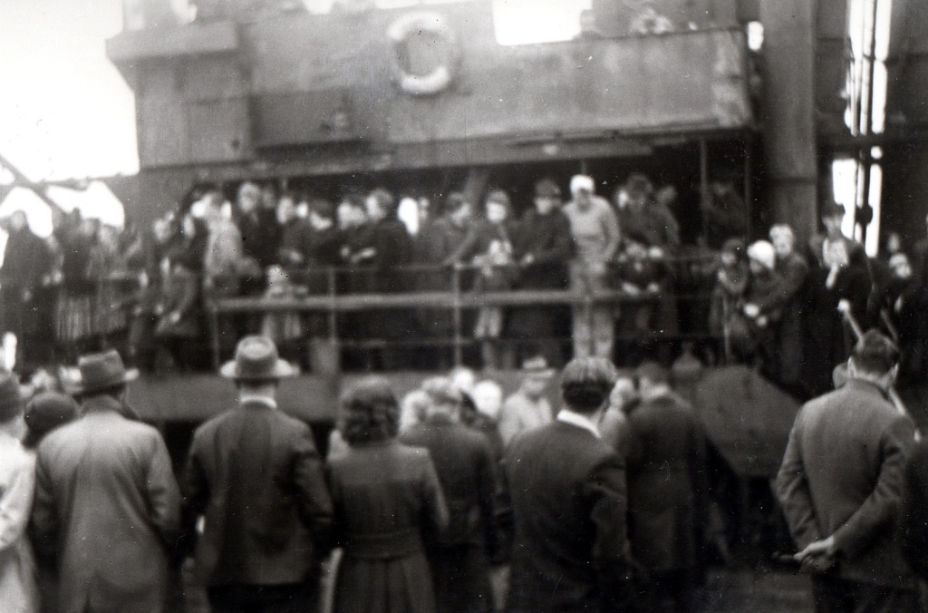
Onboard were 303 people. The first day the ship inspector had said that 49 people had to disembark if the ship wanted to get a sailing permit. The authorities had foreseen difficulties with this, but upon discussion Tuesday on board, the refugees themselves had chosen 49 individuals who had to remain behind. These 49 went willingly off the ship.
On Wednesday they [the 49] had disappeared from Lysekil and with that the authorities had performed their duties. They could not prevent - and apparently did not want to - that these 49 awaited in international waters and boarded the boat when the boat reached them. The supposition for this is very realistic.
And then the pilot came onboard. The ropes were released. A lot of people at the front deck began to sing "Sa vana, sa vaba". Many on board stood and cried, the tears flowed. Some people on the pier had removed their hats, but they did not sing.
When the Walnut began to move away, all those onboard began to sing and it could be heard over the quickly expanding distance. Leaving the harbor, the Walnut sailed clearly towards the north-west -- the wind blowing the blue and white Honduras flag in the aft. We could see how the people on board were waving..."
Translated by Tiiu Roiser-Chorowiec from an undated newspaper clipping - approx. Nov. or Dec. of 1948? Source Unknown - Author known only as "K".
Image - THE WALNUT VOYAGE - The North Sea Storm "Põhjamere Tormis" is a drawing
done by an artist on board - Joh. Saarniit
Sent from SLIGO, Ireland - November 28, 1948.
Ireland's rounded and sporadic ocean cliffs are due to the waves of the Atlantic. Like the Captain says, today there are "dead waves" [meaning calm]. Our direction is West and our voyage continues, towards the unknown fall sea and towards a fugitive's land of hope.
The North Sea did not caress the Walnut. Leaving the port of Lysekil, the sun was shining. As we sang the Swedish and homeland anthems, the ship pulled away from the berth.
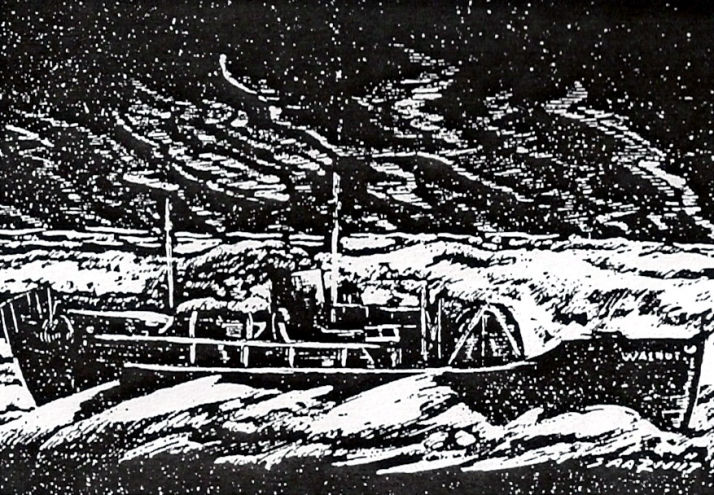
The fiords of Norway as well as the "skäärid" [rock islands] sparkled in their autumn colours. The picture changed completely after an evening on the sea. In the middle of the North Sea, Neptune showed his fierce moodiness giving gale force 9 winds day and night. The iron boat danced on the storm as massive waves crashed continuously over the stern and upper deck. It became the unconscious unanimous thought of the fellow passengers - in case the circumstances became dire, "surely we'll make it to England". We had felt the same way earlier, but now no more. The North sea does not caress the second half of November.
But hardships pass, storm winds calm and the seasick get better. When reaching Ireland and again seeing the sunshine, we quickly forgot completely all jostling. From the decks below came out "unseen faces", who since the beginning of the voyage suffered from seasickness and therefore had no interest in food.
This was the beginning of the "Walnut's" long journey. When reading these lines, the ship will again be on her way far in the Atlantic.
The "Walnut" is a proper boat, although small. It has previously sailed the Atlantic under the British flag - now the Union Jack has been exchanged for the blue and white Honduras flag. It is known that during the purchase of the ship a co-operative was begun named "Compania Maritima Walnut S.A.", which was registered in Panama. The Chairman of the co-operative is A. Kalbus, Treasurer is A. Suursööt, the Captain is A. Linde and members are all aboard.
We have eight nationalities represented - all fugitives from countries ravaged by communism. Of the 300 or more aboard, there is a majority of Estonians. The nationalities are getting along well. Of course, it is not easy to place this amount of people "under the same hat", but serious and insurmountable difficulties including serious illnesses have not occurred during this first third of our journey.
Ireland's poor fields and the hills touching the clouds will disappear tomorrow morning into the mist of the shore. Accompanying us will remain the wind, water and seagulls journeying West. May there be a wind at our back and sunshine on the way to distant shores.
Signed "K"
Extract of Article in "Göteborgs-Posten" - November 18, 1948 - Author Unknown
Lysekil.-- The "Walnut" has now gone to sea. On board are 352 persons comprising Esthonians [correction: Estonians], Latvians, Finns, Poles and Germans, 70 of whom are children. Their objective is America. The "Walnut" is an ex English escort vessel, built 1940 and is designed for service in the N. Atlantic. She is seaworthy and has a certificate from the Swedish Board of Trade. The ship is equipped with echo sounding apparatus, radio and gyro compass and officers and crew are all seafaring folk. She makes 12 knots and is 50 meters long. Fitted with 3 large lifeboats taking 40 persons each and 3 rafts. The ship was purchased in England.
Almost all on board have worked in Sweden many years. They have saved for this trip and all adults aboard are shareholders in the ship and each share costs Swedish Kr. 1,100.
There was a total of 303 persons on board, the day before ship's departure at ship's inspection it was decided that 49 of the passengers must go ashore before permission to sail would be granted. The majority had counted with trouble, but after a conference onboard on Tuesday night the refugees decided themselves which 49 should go ashore and they went willingly. To-day these had all disappeared out of Lysekil and had thereby performed their obligations. They could not, of course, prevent - that the 49 waited in International water and went on board the ship there. Out in the harbor the "Walnut" swung and began to sail with the Honduras blue and white flag flying astern.
Halifax Mail - dated December ?, 1948, Author Unknown
Posted courtesy of The Halifax Herald Ltd. Copyright © The Halifax Herald Ltd. - Not to be reproduced in any print or electronic format - (ie: CD, DVD, Video, magazines, books, print or electronic newsletters, emails, electronic publishing).
With 347 refugees crammed into living quarters originally designed for 14 men, the former minesweeper Walnut is believed to be steaming towards Halifax today after putting into Sydney last night following a three-week voyage filled with hardship and deprivation, from Gothenburg, Sweden.
The Walnut, with her load of refugees, who are fleeing the Russian terror which they reported is threatening Sweden, will arrive in Halifax sometime tomorrow after setting out from North Sydney Harbour this morning, when Sydney immigration officials ordered them to this port. A lack of facilities for handling such a large cargo of persons existed in the Cape Breton port, an official there stated last night.
All aboard were worn out in the storm-tossed race for a Canadian shore after three weeks at sea.
Most of the displaced persons were Estonians - about 90 percent was the official estimate - and they ranged in age from nine months to 80 years. Others in the group were Lithuanians, Latvians, Poles, one Dane and one Austrian.
Showed Effects Of Trip
Packed on the deck in sardine fashion, the rugged, raw-boned men, buxom women, pretty blonde girls, and grinning, fair-haired children, showed effects of their flight to freedom across the ocean.
The former "sweeper" retained its English name of Walnut, but in the place of its former 14-man crew, 347 persons had lived for three weeks.
Captain Linde August, 47, told The Halifax Herald the stormy crossing took care of food problems. "Most of the passengers were seasick for 10 days," he said.
Although the decks were washed and the ship brightened up for what the ship doctor said was arrival "in the promised land of the western democracies," sunken cheeks and questioning stares of the children told a story of hardship better than words.
An hour after arrival, Newman Dubinsky, Whitney Pier ship supply dealer, brought down dozens of individual ice cream cartons.
Old and young grabbed and gulped. For some it was the first food in days. Later when sweet biscuits were passed around, it was impossible to move around the confined space. Candies came later from Mr. Dubinsky, a Santa Clause for the unwelcome [typo?] guests, in an official way, at least.
Only a few crew members had visas for Canada. The rest were in flight from Sweden, fearful of their future, fighting to forget the past.
Acting as ship's doctor was 28-year-old Walter Kasx [sp?], a last year student of medicine at Estonia's City of Tartu, before the Russians moved in. He hopes to complete his studies in Canada.
Speaking in good English, he said "we were all seasick at one time or another. There were some who complained of appendicitis. When you are seasick, you have a lot of other troubles."
Kasx said the rugged Walnut left Gothenburg, Sweden, Nov. 17, spent three days on the west coast of Ireland, and then headed for what they called the "Promised Land -- Canada."
They hit a storm in mid-Atlantic and another one just before they reached Cape Breton.
"You can imagine 347 people pushed in places built for 14," he said.
Kasx said most of the Estonians on the ship moved to Sweden in 1944 ahead of the feared Russian advance.
Reason for the flight from Sweden was the new stand of that nation. "The foreign policy is unsure, but the foreign minister has said it is impossible to be neutral because Russia is so near."
"For us it is prison or death. All our people have the greatest desire to live in a democratic land, in the western meaning of the word, but not the eastern meaning."
"We appeal to Canadians to help us get permission to stay here as political refugees."
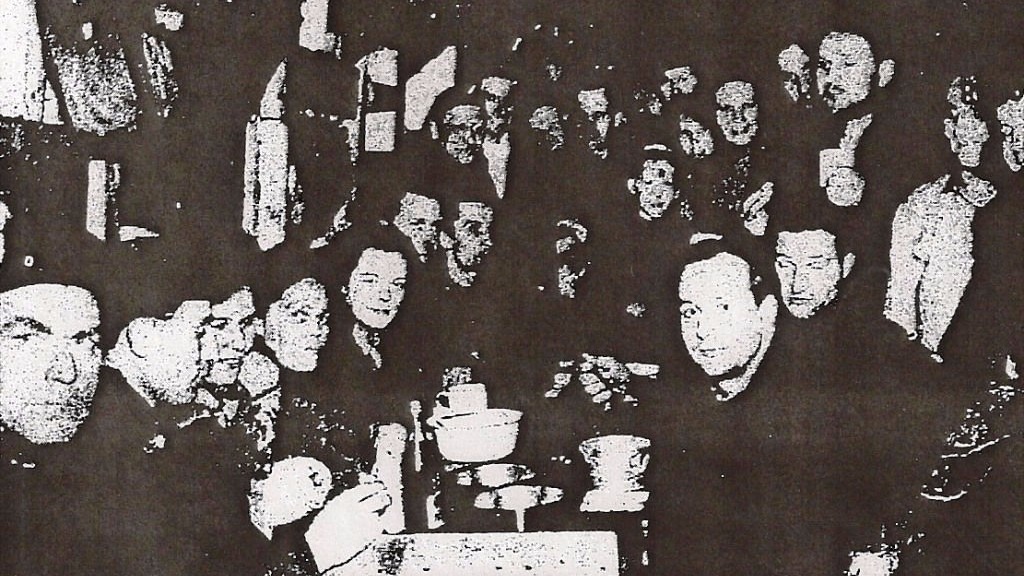
Shown above are some of the 347 refugees who arrived in Sydney yesterday afternoon after a 25-day voyage from Göttenberg, Sweden. Post-Record cameraman dropped in on the group last evening just as they were having supper. The crowd in the background are waiting for those at the table to finish up, so they may get a chance to fill-up. Similar supper groups were found throughout the vessel which is owned by [a] courageous band who fled their homelands for Canada to escape Soviet domination.
Sydney Post - December 1948
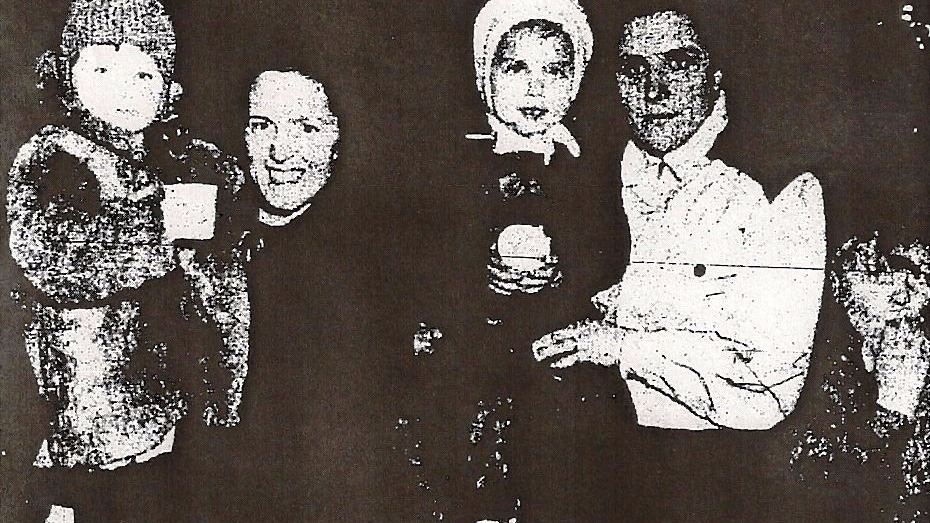
Two of the many mothers and children of the refugee ship Walnut are shown above. The youngsters had just been presented with containers of ice cream when the cameraman happened by. Incidentally, it was the first time in their lives they had tasted the frozen food delicacy. Needless to add, there was a big demand for more.
Sydney Post - December 1948
Sydney Post - Dec. 14, 1948 - Author Unknown
HALIFAX, Dec. 13 -- (CP) -- Fifth band in the last four months to flee their homelands for Canada to escape Soviet domination, a group of 347 Easter European refugees arrived here today after a three-week voyage from Gothenburg, Sweden, aboard their co-operatively owned converted minesweeper Walnut.
Largest to arrive in the Dominion to date, the group will be detained by immigration officers here and after careful screening may be admitted to the country. The process usually takes some weeks.
While in detention, they are well fed and cared for and children are schooled in English and other fundamental subjects.
The 700-ton vessel left Sydney, N.S., yesterday morning after being delayed since Friday by the season's first snowstorm. She unexpectedly arrived off the Cape Breton port city and after taking on coal ordered here by immigration authorities due to lack of facilities at Sydney.
Jammed on the stubby former war boat were 330 passengers and 17 crew members - most of them Estonian farmers and fishermen. They had been living in Sweden since their escape from a Russian prison four years ago.
One of them, acting as the ship's doctor, hopes to get his M.D. in Canada. Of all ages, the group included an 82-year-old woman and a nine-month-old baby.
Asked why he left Sweden, one said the political trend in Sweden made it advisable to leave the country. He said two years ago the Swedish government had handed over 140 Estonians to the Russians and the group feared they might suffer a similar fate.
Immigration authorities said accommodation for the overflow group has been prepared at immigration barracks here. Last night these authorities said they had known "unofficially" the day the Walnut sailed for Canada but they did not say how advance word of the ship's sailing had reached them.
A spokesman said if the refugees were "admissible" upon arrival "they will be allowed to enter the country the same as any other passengers." If not, information concerning them would be "passed on to federal authorities" for action.
The spokesman said he understood some of the refugees possessed visas but he did not know how many.
All four previous groups -two of them arriving here and one each landing at Quebec and Saint John, (N.B.) - were admitted to Canada almost two months ago after about a month's investigation by immigration officers. Many of the refugees who arrived at Halifax in August have remained here and have found jobs as fishermen and domestics.
The Globe and Mail Newspaper - Tuesday, December 14, 1948 -
Copyright © The Globe and Mail - Posted with permission.
Halifax, Dec. 13 (CP). -- A group of 347 Eastern European refugees, who hope to become Canadians, arrived here today after a transatlantic voyage in a tiny ship to make a bid for freedom in a new land.
In immigration barracks where they were quartered pending screening and possible admission to Canada, Gottlieb Mayrhoffer told of their month-long voyage from Gothenburg, Sweden.
The short, dark-haired Austrian, well-fed and happy and with nothing to worry him but the after-effects of food poisoning, said their vessel, the co-operatively-owned, converted minesweeper Walnut, left Gothenburg Nov. 13.
They went up the Swedish coast and picked up additional comrades waiting to make the trip. Then the 700-ton ship headed out across the North Sea.
The Walnut made her only stopover on the Irish coast where coal was taken aboard.
Mayrhoffer, who had spent 10 years in Canada, most of it when a child, described the voyage: "It was fairly rough and the ship kept going up and down, back and forth. We were packed in like sardines. We had four pregnant women on board and they were sick -- my wife was one of them.
Then, a few days at sea, I ate something bad because I got sick. My bones were shaking and even yet I am weak. I had to look after my son, just a year old.
It was almost impossible to cook any food with the ship tossing around. I wouldn't want to make that trip again for all the money in the world."
The Walnut was commanded by husky 47-year-old Capt. August Linde [corrected], an Estonian.
Mayrhoffer smiled appreciatively as he told of the food, clothing and candies given them by residents of North Sydney, N.S., where the ship spent the week-end tied up by bad weather.
Tonight, blond Finns and black haired Lithuanians milled around this city's immigration barracks. They were fed in groups.
"Sweden will not take us back," said Mayrhoffer, "and to go home, well..."
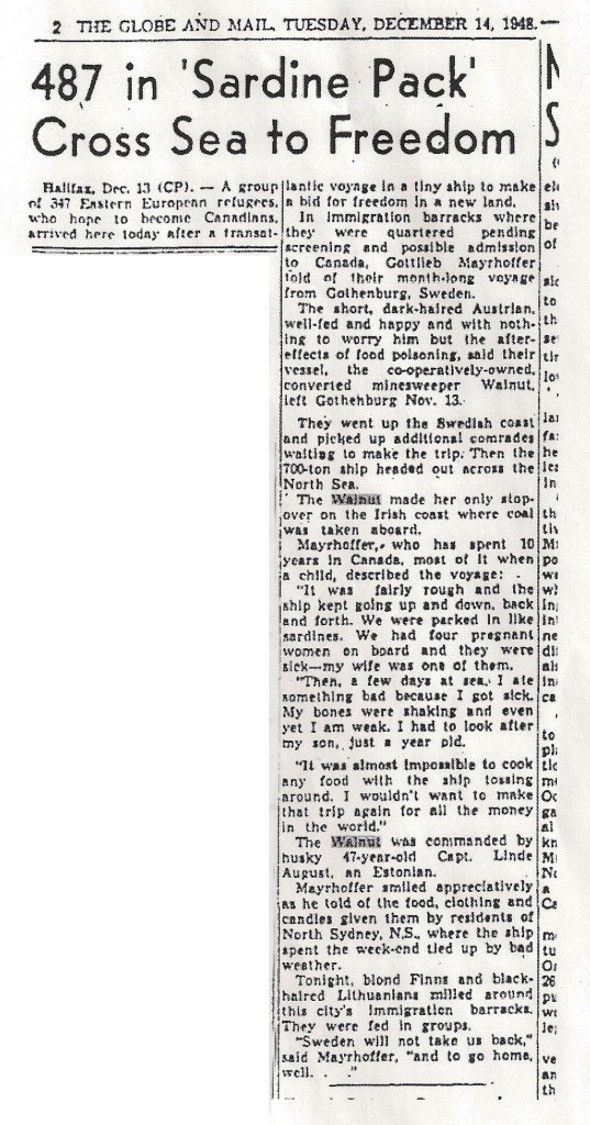
Toronto Star, December 14, 1948
Copyright © Toronto Star - Posted with permission from Torstar Syndication Services.
Halifax, Dec. 14 -- (CP) -- A 47-year-old Estonian sea captain landed "The worst cargo I ever had" here yesterday after a 30-day tussle with rough seas, and today the "cargo" was being questioned, documented, examined and fed by immigration teams.
Capt. Linde August [correction: August Linde] sailed the 700-ton converted minesweeper Walnut out of Gothenburg, Sweden, Nov. 13 bound for "this free, democratic land of Canada" with some 300 eastern European refugees jammed into a ship built to carry 14 persons.
His cramped passengers were hungry and weak from seasickness when they arrived, but their spirits were high as they were herded into immigration barracks. The specter of Russian domination in their homelands - Poland, Latvia, Estonia and Lithuania - was a distant thing.
Said the captain: "It was the worst cargo I ever had. Human cargo is always risky, but with so many in such small quarters - it was bad."
One of them, who has spent 10 years in Canada, most of it when a child, gave this description of the voyage: "It was fairly rough and the ship kept going up and down, back and forth. We were packed in like sardines. We had four expectant mothers on board, and they were sick. My wife was one of them. Then, a few days at sea, I ate meat or something and it must have been bad, because I got sick. My bones were shaking and even yet I am weak. But I am all right now. At the same time I had to look after my year-old son. It was almost impossible to cook any food with the ship tossing around."
He smiled appreciatively as he told of the food, clothing and candies given them by residents of North Sydney, N.S. where the ship spent the weekend tied up by bad weather.
The immigrants will stay in immigration barracks until they can be carefully screened and examined by immigration authorities. If they meet requirements, they probably will be admitted. Similar expeditions have been successful in gaining admission in the past.
The Halifax Mail - December 14, 1948
Posted courtesy of The Halifax Herald Ltd. Copyright © The Halifax Herald Ltd. - Not to be reproduced in any print or electronic format - (ie: CD, DVD, Video, magazines, books, print or electronic newsletters, emails, electronic publishing).
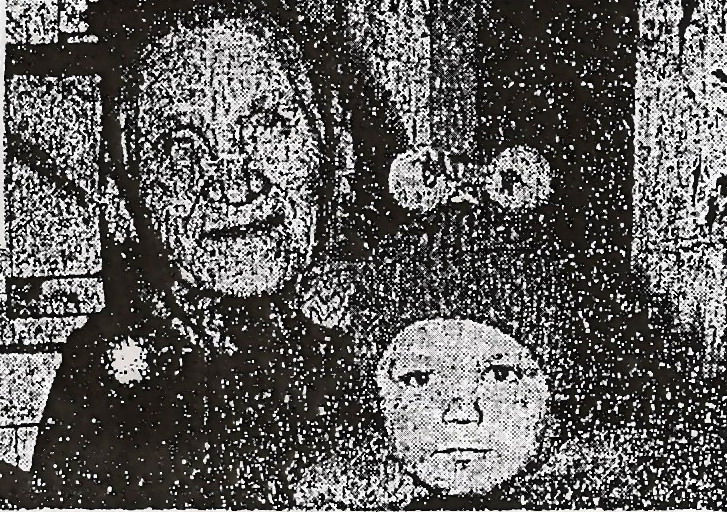
The oldest passenger on the refugee ship Walnut which arrived in Halifax yesterday with the 347 Baltic refugees from Sweden is shown holding one of the youngest on the ship while they awaited disembarkation. 80-year-old Anna Marie Kodilainen is Esthonian [correction: Estonian] as well as Lutta Klemmer, the two-year-old she is holding. (Staff photo by Norwood.)
The Halifax Herald - December 27, 1948
Posted courtesy of The Halifax Herald Ltd. Copyright © The Halifax Herald Ltd. - Not to be reproduced in any print or electronic format - (ie: CD, DVD, Video, magazines, books, print or electronic newsletters, emails, electronic publishing).
Laden with Christmas presents and treats, Santa Claus visited over 70 Baltic refugee children at Canadian Immigration detention quarters Christmas Eve. The City of Halifax and the men's and women's press clubs teamed up to stage the Yuletide celebration for the children, who arrived here recently on the converted refugee ship Walnut.
Captain August Linde, Estonian skipper of the tiny former minesweeper, made a hit with the kiddies as Santa Claus at the celebrations, which were staged at Canadian immigration quarters and at Rockhead Detention Hospital during the afternoon. Even Luule, his seven-year-old daughter, didn't recognize him in Santa's garb.
For many of the children it was their first real Christmas celebration, although it was celebrated thousands of miles from their homeland, overrun by the Russians in 1944.
A shiny silver dollar - "start of the wealth they would accumulate when they were able to settle in Canada" - was presented to the youngest child, the mother of the largest family of potential citizens, and the oldest of the refugees, by Mayor J. E. Ahern, instigator of the party.
Through funds provided by the city and through efforts of Press Club members E. G. L. Wetmore and Miss Frances Harris, a toy..... [End of article is missing.]
The Halifax Herald - December 27, 1948
Posted courtesy of The Halifax Herald Ltd. Copyright © The Halifax Herald Ltd. - Not to be reproduced in any print or electronic format - (ie: CD, DVD, Video, magazines, books, print or electronic newsletters, emails, electronic publishing).
Parties were staged at the Immigration Detention Quarters at the Seawall and at Rockhead Christmas Eve by the Halifax Branch of the Nova Scotia Division of the Canadian Red Cross Society. The parties had as their guests the "DP's" [note: DP=Displaced Person] who came to Canada a short time ago aboard the former mine-sweeper "Walnut".
Each man received a packet of cigarettes and each woman a gift of candy, while the children received attractively wrapped toy gifts. These were reconditioned playthings provided by the Naval Officers' Wives and other interested citizens.
An attractive program of poetic recitals, songs and communal singing of carols, added to the pleasure of the occasion. In addition some of the people donned the costumes of their native lands and engaged in folk dances.
At the pier, the Red Cross party was under charge of a committee headed by Mrs. W. G. Robertson, Sr., with Ralph E. Marshall, Principal of Queen Elizabeth High School, handing out the gifts, aided by the captain of the Walnut, Mr. and Mrs. Marshall were present at both parties as representatives of the school children of Q.E.H. who had donated the ornamentation of the trees which had been placed there by the Red Cross.
Image not part of original article.
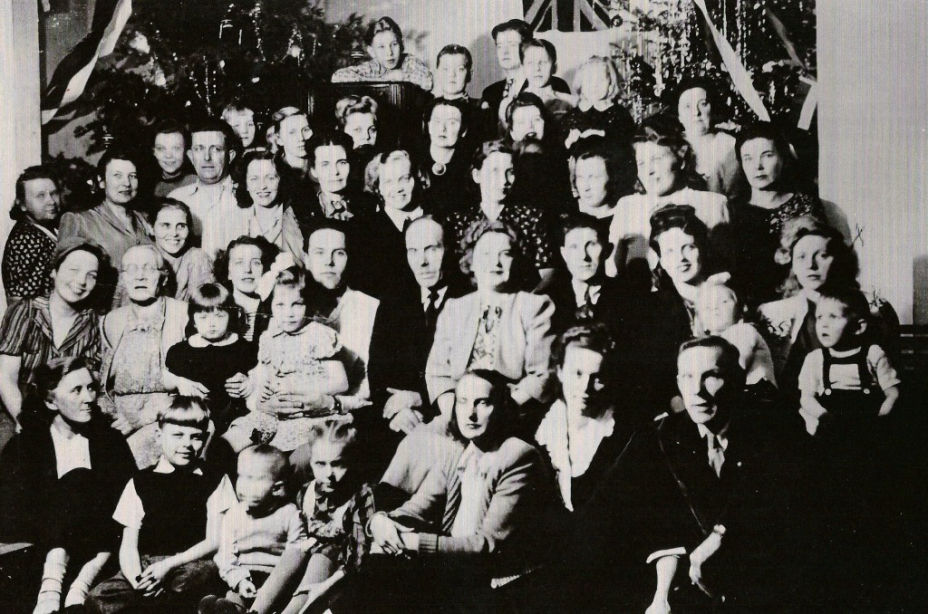
[Note misspelling - Should read "Estonians"]
By A. O. Tate, Star Staff Correspondent. Toronto Daily Star - Tuesday, December 28, 1948
Copyright © Toronto Star - Posted with permission from Torstar Syndication Services.

FIRST CHRISTMAS in Canada could be her last here, too, but Ene Pomerants, three, will remember it. Among 350 Europeans held by immigration officials at Halifax, she and others were given Yule party by press club.
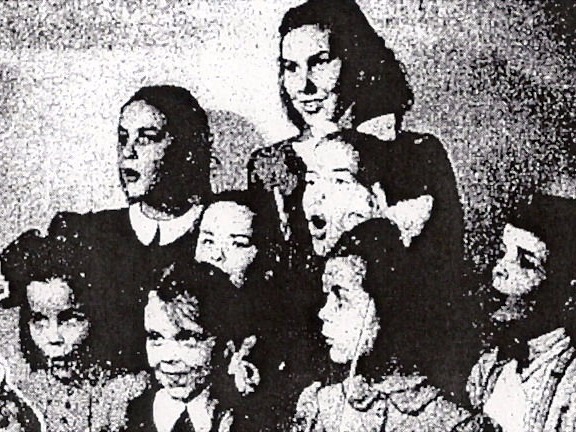
ESTONIAN CHILDREN sing Christmas carols at party held in Halifax detention barracks. The large group who had fled Russian-dominated countries arrived aboard a little mine-sweeper before Christmas and presented themselves to immigration officials.
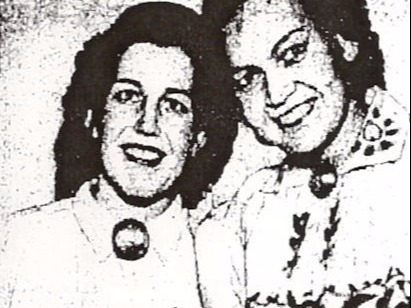
THESE TWO little girls, Maria Warkki and Mary Hindieus, were among the many children who arrived in Canada in native costume, looking to a new and safe home. Santa visited them at the party.

IMMIGRATION OFFICIALS are "processing" the group of refugees but indication that they will be allowed to remain in Canada was seen in Mayor Ahern's remark as he presented silver dollars to the youngest boy and girl. The mayor said he hoped the dollars would be the start of a fortune to be earned in Canada. A group of the children are seen.
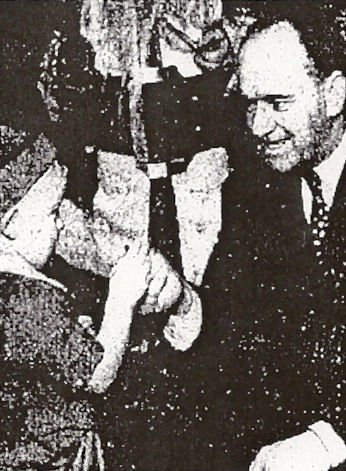
YOUNGEST BOY among the Estonian refugees gets a shining silver dollar from Mayor J.E. Ahern of Halifax. Mayor asked city's press club to stage party for children.
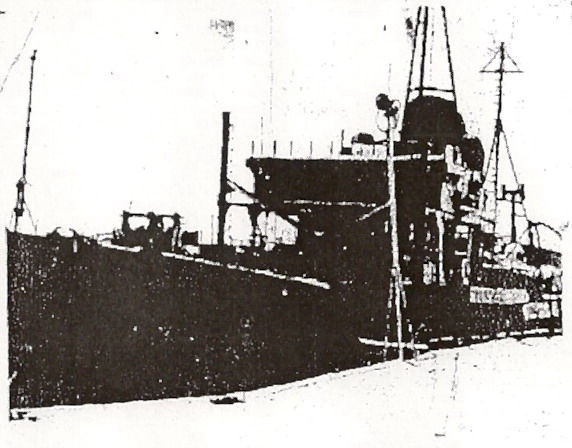
LITTLE MINESWEEPER Walnut in which the refugees made the Atlantic journey is shown tied up at French cable wharf in Halifax. Refugee mothers dabbed handkerchiefs to their eyes as they saw Santa Claus--ship's skipper--given children gifts for Christmas.
